W25Q256JVEIQ IC: Features, Applications and Datasheet
SpiFlash® Memory IC SpiFlash® Series 8mm mm
The Winbond Electronics W25Q256JVEIQ is a flash memory chip that can store up to 256 megabits of data. This article will introduce its features, applications and datasheet.
W25Q256JVEIQ Description
The Winbond Electronics W25Q256JVEIQ is a flash memory chip that can store up to 256 megabits of data. It uses a serial interface that allows it to communicate with other devices using four wires: clock, data in, data out, and chip select. It can operate at a high speed of 133 MHz and has low power consumption. It is suitable for applications that require large data storage, such as data logging, audio, video, and firmware updates.
The W25Q256JVEIQ is part of the SpiFlash® series of Winbond Electronics, which offers high-performance, low-power, and cost-effective serial flash solutions. It has a small package size of 8x6 mm and an exposed pad for better heat dissipation. It also supports multiple security features, such as software and hardware write protection, one-time programmable regions, secure erase and lock, and unique device ID.
W25Q256JVEIQ Features
It is a FLASH - NOR Memory IC with a memory size of 256Mbit.
The memory is organized as 32M x 81.
It operates on a SPI - Quad I/O memory interface.
The clock frequency is 133 MHz.
The write cycle time for word, page is 3ms.
It operates at a voltage supply of 2.7V ~ 3.6V.
The operating temperature ranges from -40°C ~ 85°C (TA).
It is designed for surface mount and comes in an 8-WDFN Exposed Pad package.
The supplier device package is 8-WSON (8x6).
Specifications
- TypeParameter
- Factory Lead Time10 Weeks
- Mounting Type
The "Mounting Type" in electronic components refers to the method used to attach or connect a component to a circuit board or other substrate, such as through-hole, surface-mount, or panel mount.
Surface Mount - Package / Case
refers to the protective housing that encases an electronic component, providing mechanical support, electrical connections, and thermal management.
8-WDFN Exposed Pad - Surface Mount
having leads that are designed to be soldered on the side of a circuit board that the body of the component is mounted on.
YES - Memory TypesNon-Volatile
- Operating Temperature
The operating temperature is the range of ambient temperature within which a power supply, or any other electrical equipment, operate in. This ranges from a minimum operating temperature, to a peak or maximum operating temperature, outside which, the power supply may fail.
-40°C~85°C TA - Packaging
Semiconductor package is a carrier / shell used to contain and cover one or more semiconductor components or integrated circuits. The material of the shell can be metal, plastic, glass or ceramic.
Tube - Series
In electronic components, the "Series" refers to a group of products that share similar characteristics, designs, or functionalities, often produced by the same manufacturer. These components within a series typically have common specifications but may vary in terms of voltage, power, or packaging to meet different application needs. The series name helps identify and differentiate between various product lines within a manufacturer's catalog.
SpiFlash® - Pbfree Code
The "Pbfree Code" parameter in electronic components refers to the code or marking used to indicate that the component is lead-free. Lead (Pb) is a toxic substance that has been widely used in electronic components for many years, but due to environmental concerns, there has been a shift towards lead-free alternatives. The Pbfree Code helps manufacturers and users easily identify components that do not contain lead, ensuring compliance with regulations and promoting environmentally friendly practices. It is important to pay attention to the Pbfree Code when selecting electronic components to ensure they meet the necessary requirements for lead-free applications.
yes - Part Status
Parts can have many statuses as they progress through the configuration, analysis, review, and approval stages.
Active - Moisture Sensitivity Level (MSL)
Moisture Sensitivity Level (MSL) is a standardized rating that indicates the susceptibility of electronic components, particularly semiconductors, to moisture-induced damage during storage and the soldering process, defining the allowable exposure time to ambient conditions before they require special handling or baking to prevent failures
3 (168 Hours) - Number of Terminations8
- Voltage - Supply
Voltage - Supply refers to the range of voltage levels that an electronic component or circuit is designed to operate with. It indicates the minimum and maximum supply voltage that can be applied for the device to function properly. Providing supply voltages outside this range can lead to malfunction, damage, or reduced performance. This parameter is critical for ensuring compatibility between different components in a circuit.
2.7V~3.6V - Terminal Position
In electronic components, the term "Terminal Position" refers to the physical location of the connection points on the component where external electrical connections can be made. These connection points, known as terminals, are typically used to attach wires, leads, or other components to the main body of the electronic component. The terminal position is important for ensuring proper connectivity and functionality of the component within a circuit. It is often specified in technical datasheets or component specifications to help designers and engineers understand how to properly integrate the component into their circuit designs.
DUAL - Peak Reflow Temperature (Cel)
Peak Reflow Temperature (Cel) is a parameter that specifies the maximum temperature at which an electronic component can be exposed during the reflow soldering process. Reflow soldering is a common method used to attach electronic components to a circuit board. The Peak Reflow Temperature is crucial because it ensures that the component is not damaged or degraded during the soldering process. Exceeding the specified Peak Reflow Temperature can lead to issues such as component failure, reduced performance, or even permanent damage to the component. It is important for manufacturers and assemblers to adhere to the recommended Peak Reflow Temperature to ensure the reliability and functionality of the electronic components.
NOT SPECIFIED - Number of Functions1
- Supply Voltage
Supply voltage refers to the electrical potential difference provided to an electronic component or circuit. It is crucial for the proper operation of devices, as it powers their functions and determines performance characteristics. The supply voltage must be within specified limits to ensure reliability and prevent damage to components. Different electronic devices have specific supply voltage requirements, which can vary widely depending on their design and intended application.
3V - Terminal Pitch
The center distance from one pole to the next.
1.27mm - Time@Peak Reflow Temperature-Max (s)
Time@Peak Reflow Temperature-Max (s) refers to the maximum duration that an electronic component can be exposed to the peak reflow temperature during the soldering process, which is crucial for ensuring reliable solder joint formation without damaging the component.
NOT SPECIFIED - JESD-30 Code
JESD-30 Code refers to a standardized descriptive designation system established by JEDEC for semiconductor-device packages. This system provides a systematic method for generating designators that convey essential information about the package's physical characteristics, such as size and shape, which aids in component identification and selection. By using JESD-30 codes, manufacturers and engineers can ensure consistency and clarity in the specification of semiconductor packages across various applications and industries.
R-PDSO-N8 - Supply Voltage-Max (Vsup)
The parameter "Supply Voltage-Max (Vsup)" in electronic components refers to the maximum voltage that can be safely applied to the component without causing damage. It is an important specification to consider when designing or using electronic circuits to ensure the component operates within its safe operating limits. Exceeding the maximum supply voltage can lead to overheating, component failure, or even permanent damage. It is crucial to adhere to the specified maximum supply voltage to ensure the reliable and safe operation of the electronic component.
3.6V - Supply Voltage-Min (Vsup)
The parameter "Supply Voltage-Min (Vsup)" in electronic components refers to the minimum voltage level required for the component to operate within its specified performance range. This parameter indicates the lowest voltage that can be safely applied to the component without risking damage or malfunction. It is crucial to ensure that the supply voltage provided to the component meets or exceeds this minimum value to ensure proper functionality and reliability. Failure to adhere to the specified minimum supply voltage may result in erratic behavior, reduced performance, or even permanent damage to the component.
2.7V - Memory Size
The memory capacity is the amount of data a device can store at any given time in its memory.
256Mb 32M x 8 - Operating Mode
A phase of operation during the operation and maintenance stages of the life cycle of a facility.
SYNCHRONOUS - Clock Frequency
Clock frequency, also known as clock speed, refers to the rate at which a processor or electronic component can execute instructions. It is measured in hertz (Hz) and represents the number of cycles per second that the component can perform. A higher clock frequency typically indicates a faster processing speed and better performance. However, it is important to note that other factors such as architecture, efficiency, and workload also play a significant role in determining the overall performance of a component. In summary, clock frequency is a crucial parameter that influences the speed and efficiency of electronic components in processing data and executing tasks.
133MHz - Memory Format
Memory Format in electronic components refers to the specific organization and structure of data storage within a memory device. It defines how data is stored, accessed, and managed within the memory module. Different memory formats include RAM (Random Access Memory), ROM (Read-Only Memory), and various types of flash memory. The memory format determines the speed, capacity, and functionality of the memory device, and it is crucial for compatibility with other components in a system. Understanding the memory format is essential for selecting the right memory module for a particular application or device.
FLASH - Memory Interface
An external memory interface is a bus protocol for communication from an integrated circuit, such as a microprocessor, to an external memory device located on a circuit board.
SPI - Quad I/O - Organization
In the context of electronic components, the parameter "Organization" typically refers to the arrangement or structure of the internal components within a device or system. It can describe how various elements such as transistors, resistors, capacitors, and other components are physically arranged and interconnected on a circuit board or within a semiconductor chip.The organization of electronic components plays a crucial role in determining the functionality, performance, and efficiency of a device. It can impact factors such as signal propagation, power consumption, thermal management, and overall system complexity. Engineers carefully design the organization of components to optimize the operation of electronic devices and ensure reliable performance.Different types of electronic components may have specific organizational requirements based on the intended application and design considerations. For example, integrated circuits may have a highly compact and intricate organization to maximize functionality within a small footprint, while larger electronic systems may have a more modular and distributed organization to facilitate maintenance and scalability.
32MX8 - Memory Width
Memory width refers to the number of bits that can be read or written to memory at one time. It is an important specification in electronic components, particularly in memory devices like RAM and cache. A wider memory width allows for greater data throughput, enabling faster performance as more data can be processed simultaneously. Memory width can vary among different types of memory and can impact both the complexity and efficiency of data handling within electronic systems.
8 - Write Cycle Time - Word, Page
Write Cycle Time - Word, Page refers to the duration required to write data to a specific memory cell or a page of memory in electronic components, particularly in non-volatile memories like Flash or EEPROM. It indicates the time taken to complete a writing operation for a single word or an entire page of data. This parameter is crucial for determining the performance and speed of memory devices in applications where quick data storage is essential. It impacts the overall efficiency in data handling, affecting both read and write speeds in memory-related operations.
3ms - Memory Density
Memory density in electronic components refers to the amount of data that can be stored in a given physical space or memory module. It is typically measured in bits or bytes per unit area, such as bits per square inch. Higher memory density means that more data can be stored in a smaller space, which is important for devices with limited physical size or power constraints. Memory density is a key factor in determining the capacity and performance of memory devices, such as RAM, ROM, and flash memory, and is a critical consideration in the design and manufacturing of electronic products.
268435456 bit - Parallel/Serial
The parameter "Parallel/Serial" in electronic components refers to the method of data transmission or communication within the component. In parallel communication, multiple bits of data are transmitted simultaneously over multiple channels or wires. This allows for faster data transfer rates but requires more physical connections and can be more susceptible to signal interference.On the other hand, in serial communication, data is transmitted sequentially over a single channel or wire. While serial communication may have slower data transfer rates compared to parallel communication, it is more cost-effective, requires fewer connections, and is less prone to signal interference.The choice between parallel and serial communication depends on the specific requirements of the electronic component and the overall system design, balancing factors such as speed, cost, complexity, and reliability.
SERIAL - Programming Voltage
A special high-voltage supply that supplies the potential and energy for altering the state of certain nonvolatile memory arrays. On some devices, the presence of VPP also acts as a program enable signal (P).
3V - Length8mm
- Height Seated (Max)
Height Seated (Max) is a parameter in electronic components that refers to the maximum allowable height of the component when it is properly seated or installed on a circuit board or within an enclosure. This specification is crucial for ensuring proper fit and alignment within the overall system design. Exceeding the maximum seated height can lead to mechanical interference, electrical shorts, or other issues that may impact the performance and reliability of the electronic device. Manufacturers provide this information to help designers and engineers select components that will fit within the designated space and function correctly in the intended application.
0.8mm - Width6mm
- RoHS Status
RoHS means “Restriction of Certain Hazardous Substances” in the “Hazardous Substances Directive” in electrical and electronic equipment.
ROHS3 Compliant
W25Q256JVEIQ Pinout
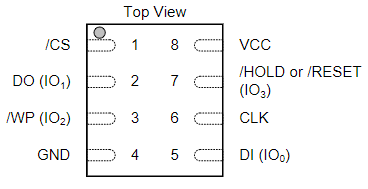

W25Q256JVEIQ CAD Model
Footprint
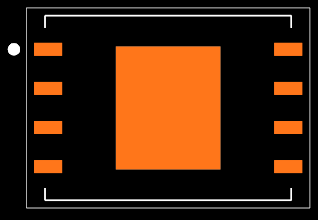
3D Model
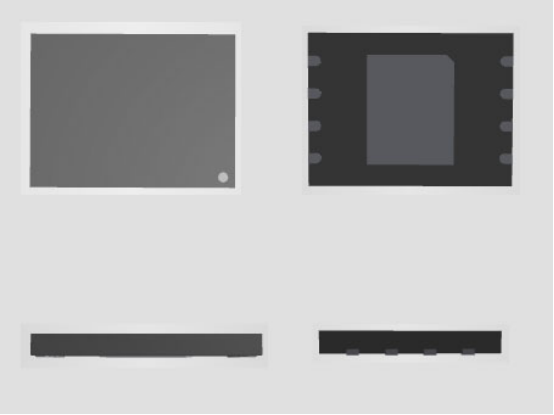
W25Q256JVEIQ Alternatives
Part Number | Description | Manufacturer |
W25Q256FVEIQ | 256M X 1 FLASH 3V PROM, PDSO8, WSON-8 | Winbond Electronics Corp |
W25Q256FVEIG | Flash, 256MX1, PDSO8, WSON-8 | Winbond Electronics Corp |
W25Q256JVEIQ Applications
Embedded Systems: This IC can be used in embedded systems where it can provide the necessary storage for the system’s firmware or other data.
Automotive Applications: In automotive applications, this IC can be used to store data related to the vehicle’s operation, such as engine control unit (ECU) firmware, infotainment system data, and more.
Industrial Control Systems: This IC can be used in industrial control systems where it can store the firmware for programmable logic controllers (PLCs), industrial PCs, and other control equipment.
Consumer Electronics: This IC can be used in various consumer electronics such as digital cameras, MP3 players, smart TVs, and more, where it can store firmware, user settings, and other data.
Networking and Communication Systems: In networking and communication systems, this IC can be used to store firmware for routers, switches, base stations, and other network equipment.
W25Q256JVEIQ Manufacturer
Winbond Electronics Corporation is a Taiwan-based corporation that was founded in 19871. It is a leading global supplier of semiconductor memory solutions. The company produces semiconductors and several types of integrated circuits (ICs) including dynamic random-access memory, static random-access memory, serial flash, microcontrollers, and Super I/O chips. Winbond is the largest brand-name IC supplier in Taiwan and one of the biggest suppliers of semiconductor solutions worldwide.
The main business groups of Winbond include: DRAM Product, NOR Flash and Memory IC Manufacturing. The company provides customer-driven memory solutions backed by the expert capabilities of product design, R&D, manufacturing, and sales services. Winbond’s headquarters are in Central Taiwan Science Park, Taiwan and it has subsidies in America, Japan, and Hong Kong.
Parts with Similar Specs
Datasheet PDF
- Datasheets :
What is the difference between W25Q256JVEIQ and W25Q128FVSG?
The W25Q256JVEIQ has a capacity of 256Mbit, while the W25Q128FVSG has a capacity of 128Mbit. This means that the W25Q256JVEIQ can store twice as much data as the W25Q128FVSG. The W25Q256JVEIQ has a clock frequency of 133 MHz, while the W25Q128FVSG has a clock frequency of 104 MHz. This means that the W25Q256JVEIQ can operate faster than the W25Q128FVSG. The W25Q256JVEIQ supports QPI (Quad Peripheral Interface), while the W25Q128FVSG does not. This means that the W25Q256JVEIQ can use four data lines to transfer data, while the W25Q128FVSG can only use two data lines. QPI can improve the performance and efficiency of the chip.
What is the price of W25Q128FVSG?
The price of W25Q128FVSG may vary depending on the supplier, the quantity, and the delivery time.
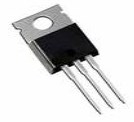 IRF1405 Power MOSFET: Pinout, Price and Datasheet
IRF1405 Power MOSFET: Pinout, Price and Datasheet10 September 20212489
 A Comprehensive Guide to S-8333AAEB-T8T1G DC-DC Switching Controller
A Comprehensive Guide to S-8333AAEB-T8T1G DC-DC Switching Controller07 March 2024225
 A Comprehensive Overview of the Analog Devices Inc. 5962-8777101MCA Linear Amplifier
A Comprehensive Overview of the Analog Devices Inc. 5962-8777101MCA Linear Amplifier06 March 202476
 CR1616 Lithium Battery-Dimensions, Equivalence, Datasheet
CR1616 Lithium Battery-Dimensions, Equivalence, Datasheet28 March 20222085
 M4T32-BR12SH6 Battery: Battery with CrystaL, Datasheet, and Feature
M4T32-BR12SH6 Battery: Battery with CrystaL, Datasheet, and Feature08 March 20221249
 LM555 vs. NE555: What Difference is between LM555 and NE555?
LM555 vs. NE555: What Difference is between LM555 and NE555?13 March 202414075
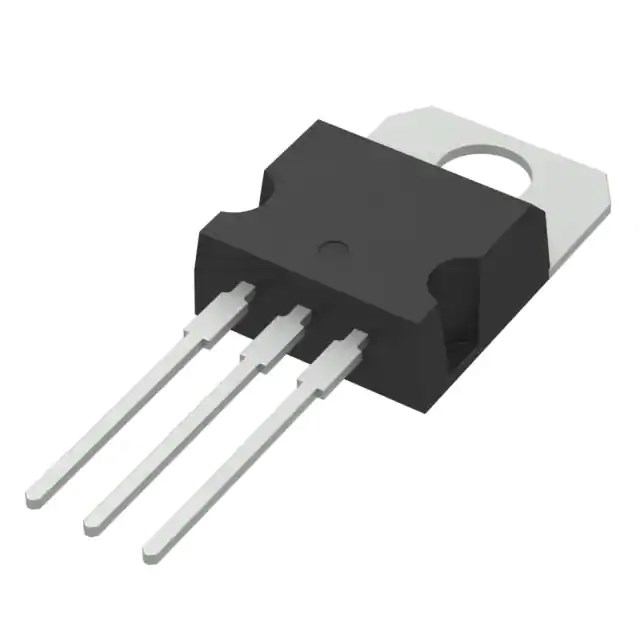 L7806CV Voltage Regulator: Pinout, Schematic Diagram, and Circuits
L7806CV Voltage Regulator: Pinout, Schematic Diagram, and Circuits16 August 20218709
 ATmega16: 8-bit Microcontroller
ATmega16: 8-bit Microcontroller29 February 2024243
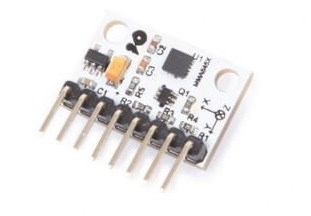 Introduction to Acceleration Sensors
Introduction to Acceleration Sensors07 November 20257392
 Basic Introduction to Filter Capacitor
Basic Introduction to Filter Capacitor05 December 202028713
 Filter Circuit: Types, Characteristics and Principles
Filter Circuit: Types, Characteristics and Principles01 December 20217035
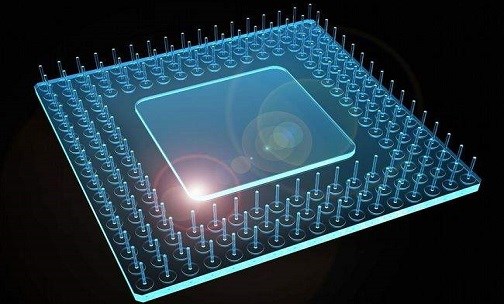 Semiconductor Equipment Industry Research
Semiconductor Equipment Industry Research25 March 20244269
 Reverse Voltage Protection for Battery Chargers
Reverse Voltage Protection for Battery Chargers29 March 20223856
 The Through Hole of the PCB Circuit Board Must be Plugged, Why?
The Through Hole of the PCB Circuit Board Must be Plugged, Why?14 February 20233095
 How Embedded Computers Drive Innovation in 2025
How Embedded Computers Drive Innovation in 202517 July 2025488
 Analysis and Solutions of Common Causes of Serial Port Lost Data
Analysis and Solutions of Common Causes of Serial Port Lost Data15 August 20224024
Winbond Electronics
In Stock: 60000
United States
China
Canada
Japan
Russia
Germany
United Kingdom
Singapore
Italy
Hong Kong(China)
Taiwan(China)
France
Korea
Mexico
Netherlands
Malaysia
Austria
Spain
Switzerland
Poland
Thailand
Vietnam
India
United Arab Emirates
Afghanistan
Åland Islands
Albania
Algeria
American Samoa
Andorra
Angola
Anguilla
Antigua & Barbuda
Argentina
Armenia
Aruba
Australia
Azerbaijan
Bahamas
Bahrain
Bangladesh
Barbados
Belarus
Belgium
Belize
Benin
Bermuda
Bhutan
Bolivia
Bonaire, Sint Eustatius and Saba
Bosnia & Herzegovina
Botswana
Brazil
British Indian Ocean Territory
British Virgin Islands
Brunei
Bulgaria
Burkina Faso
Burundi
Cabo Verde
Cambodia
Cameroon
Cayman Islands
Central African Republic
Chad
Chile
Christmas Island
Cocos (Keeling) Islands
Colombia
Comoros
Congo
Congo (DRC)
Cook Islands
Costa Rica
Côte d’Ivoire
Croatia
Cuba
Curaçao
Cyprus
Czechia
Denmark
Djibouti
Dominica
Dominican Republic
Ecuador
Egypt
El Salvador
Equatorial Guinea
Eritrea
Estonia
Eswatini
Ethiopia
Falkland Islands
Faroe Islands
Fiji
Finland
French Guiana
French Polynesia
Gabon
Gambia
Georgia
Ghana
Gibraltar
Greece
Greenland
Grenada
Guadeloupe
Guam
Guatemala
Guernsey
Guinea
Guinea-Bissau
Guyana
Haiti
Honduras
Hungary
Iceland
Indonesia
Iran
Iraq
Ireland
Isle of Man
Israel
Jamaica
Jersey
Jordan
Kazakhstan
Kenya
Kiribati
Kosovo
Kuwait
Kyrgyzstan
Laos
Latvia
Lebanon
Lesotho
Liberia
Libya
Liechtenstein
Lithuania
Luxembourg
Macao(China)
Madagascar
Malawi
Maldives
Mali
Malta
Marshall Islands
Martinique
Mauritania
Mauritius
Mayotte
Micronesia
Moldova
Monaco
Mongolia
Montenegro
Montserrat
Morocco
Mozambique
Myanmar
Namibia
Nauru
Nepal
New Caledonia
New Zealand
Nicaragua
Niger
Nigeria
Niue
Norfolk Island
North Korea
North Macedonia
Northern Mariana Islands
Norway
Oman
Pakistan
Palau
Palestinian Authority
Panama
Papua New Guinea
Paraguay
Peru
Philippines
Pitcairn Islands
Portugal
Puerto Rico
Qatar
Réunion
Romania
Rwanda
Samoa
San Marino
São Tomé & Príncipe
Saudi Arabia
Senegal
Serbia
Seychelles
Sierra Leone
Sint Maarten
Slovakia
Slovenia
Solomon Islands
Somalia
South Africa
South Sudan
Sri Lanka
St Helena, Ascension, Tristan da Cunha
St. Barthélemy
St. Kitts & Nevis
St. Lucia
St. Martin
St. Pierre & Miquelon
St. Vincent & Grenadines
Sudan
Suriname
Svalbard & Jan Mayen
Sweden
Syria
Tajikistan
Tanzania
Timor-Leste
Togo
Tokelau
Tonga
Trinidad & Tobago
Tunisia
Turkey
Turkmenistan
Turks & Caicos Islands
Tuvalu
U.S. Outlying Islands
U.S. Virgin Islands
Uganda
Ukraine
Uruguay
Uzbekistan
Vanuatu
Vatican City
Venezuela
Wallis & Futuna
Yemen
Zambia
Zimbabwe















